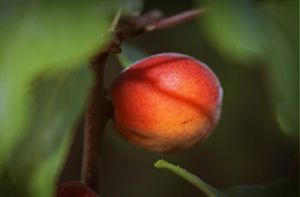Siberian apricot facts for kids
Quick facts for kids Siberian apricot |
|
|---|---|
 |
|
| Prunus sibirica fruit | |
| Scientific classification | |
| Genus: |
Prunus
|
| Species: |
sibirica
|
| Synonyms | |
|
|
The Siberian apricot (its scientific name is Prunus sibirica) is a type of small tree or bush. It grows naturally in places like northern China, Korea, Mongolia, and eastern Siberia. It belongs to the Prunus group, which is part of the rose family, called Rosaceae. Even though it's called an apricot, people don't usually grow it for its fruit. The famous scientist Carl Linnaeus gave it its name in 1753.
Contents
About the Siberian Apricot
What Does it Look Like?
This plant has many different types, showing it is very diverse. It grows as a small tree with branches that spread out. It can reach a height of about 3 meters (10 ft). The Siberian apricot is very good at handling cold weather. It can survive in temperatures as low as −45 °C (−49 °F).
The tree's bark is dark grey. The bark on its branches is reddish to dark brown. When new, it might have a few hairs, but it quickly becomes smooth and hairless. The winter buds are reddish-brown and shaped like an egg or cone. They are 2 to 4 millimeters long, and the edges of their scales are hairy.
Leaves and Flowers
The leaves are simple and have small leaf-like parts called stipules at their base. The stem that holds the leaf, called the petiole, is first hairy but soon becomes smooth. It is red and about 2 to 3.5 centimeters long. It usually has few or no glands. The leaf blade itself is simple, shaped like an egg or almost round. It is pointed at the tip and measures 5 to 10 centimeters long and 3 to 7 centimeters wide. The base of the leaf is rounded or heart-shaped. When new, the leaf surfaces are reddish, hairy, and soft. Later, they become shiny green and smooth. The edges of the leaves have small, sharp teeth, but they are not double-toothed.
The flowers appear in early spring, one at a time. The flower stalk is very short, about 1 to 2 millimeters long. The cup-shaped part of the flower, called the flower cup, is purple on the outside. It is hairy at the base, or sometimes smooth or slightly soft. Each flower has both male and female parts (it is hermaphrodite). They are 1.5 to 3.5 centimeters wide. The five petals are separate and almost round or egg-shaped. They are white with pink lines. There are many separate stamens (the male parts), and they are almost as long as the petals.
The Fruit
The fruits grow ripe in early to mid-summer. They are yellow to orange-red, but the side facing the sun often turns reddish. The fruit's dry, firm flesh (called the mesocarp) easily separates from the hard pit inside (called the endocarp). When fully ripe, the fruit opens along a seam on one side. The flesh might only be 2.5 to 3 millimeters thick. The flat, round pit inside the fruit has a smooth surface. It is 1.2 to 2.5 centimeters wide. The seed inside the pit is not very good to eat and tastes a bit bitter.
How People Use It
Scientists have studied the oil from P. sibirica seeds. They are looking into using it to make biodiesel, which is a type of fuel made from plants. The seeds of another plant, Prunus mandshurica, have even more oil. This means they also have good potential for making biodiesel.
Different Kinds of Siberian Apricot
There are four known types, or varieties, of Siberian apricot:
- var. sibirica: The leaf blade and petiole (leaf stem) are mostly smooth and hairless. The flowers are single and 1.5 to 2 centimeters wide.
- var. multipetala: The leaf blade and petiole are smooth and hairless. The flowers are large, 3 to 3.5 centimeters wide. This type only grows on slopes in eastern Hebei province, China, at about 400 meters high.
- var. pleniflora: The leaf blade and petiole are hairy at first. The flowers are 3 to 3.5 centimeters wide. This type only grows in mountains in western Liaoning province, China, at about 800 meters high.
- var. pubescens: The leaf blade and petiole are hairy at first. Later, only the small branches of the veins on the underside of the leaves remain hairy. The flowers are single and 1.5 to 2 centimeters wide.

